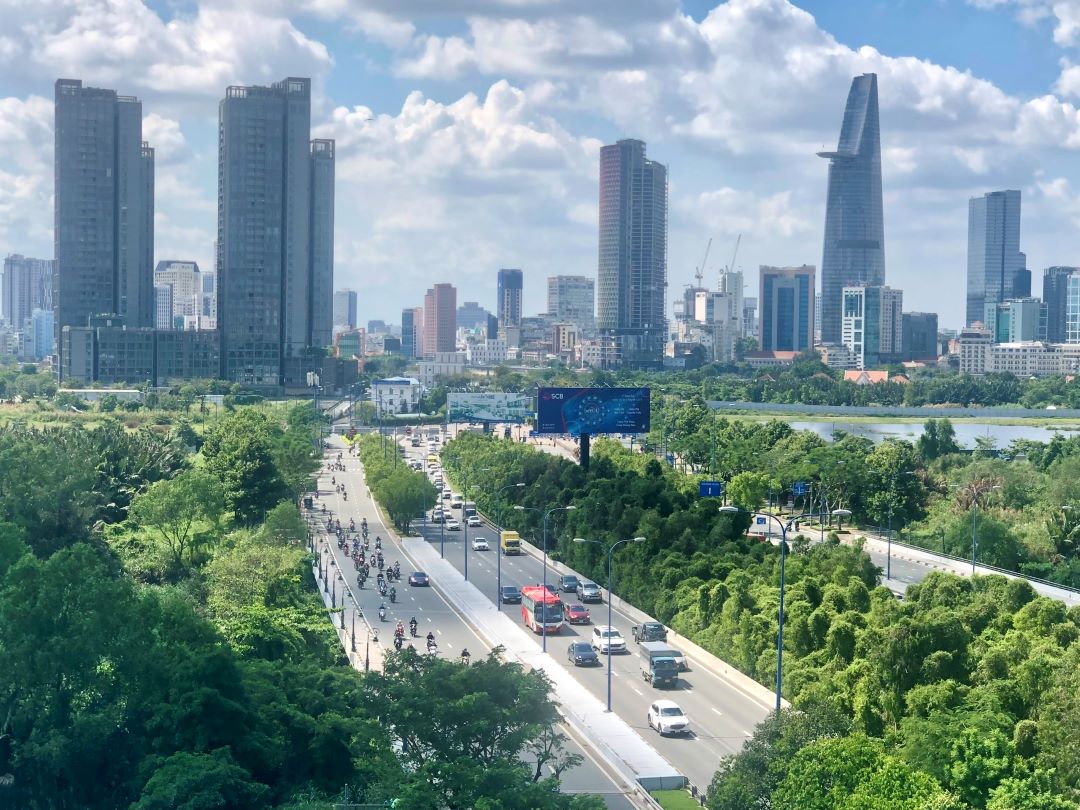Smaller Southeast Asian nations are most at risk from increasing geopolitical tensions, the slow retreat from globalization that is increasing trade barriers, and a fractured and volatile global society taking a growing interest and influence on politics and business.
Vietnam like its neighbors has to tread a delicate line in diplomacy and statesmanship to protect and grow an economy that depends on maintaining open trading channels globally, and in particular managing relations with the world’s two largest economies, China and the U.S.
The trade war between the two economic giants shows no signs of abating with Biden last month slapping 100% tariffs on all EVs imported from China and re-instating Trump-era solar panel tax while Trump, possibly his successor, is threatening about 10% tariff on all imports from China if he wins office again.
That may happen in November when the U.S. goes to the polls. With far-right groups making major gains in the EU elections on June 10 and Indian Prime Minister Narendra Modi’s National Democratic Alliance winning far fewer Parliamentary seats than expected, the complexity of the political and trading landscape is likely to increase, further challenging growth.
The rise of Vietnam
But, amid all this change, Vietnam is doing well, demonstrating why it has emerged over the last 10 years as one of the region’s fastest growing and vibrant economies with an average of 6% growth annually.
Though the Comprehensive Strategic Partnership with the U.S. is vitally important to future economic growth, the rising geopolitical tensions have brought new opportunities attracting further investment from China and the U.S. in competition with its neighbors.
U.S. businesses that have shifted manufacturing bases from China to Vietnam since the trade war include Cargill, Qualcomm, Nike, Morgan Stanley, ACORN International, General Dynamics, Hue Capital LLC, Intel, Lockheed Martin International and Google.
In 2022, 30% of Vietnam’s exports headed to the U.S. compared to 20% five years earlier. Over a similar period, China’s share of manufactured goods imported by the U.S. fell from 24% to 15%.
China’s share of U.S. laptop and smartphone imports fell in both 2022 and 2023, and Vietnam is now exporting more of those products to the U.S.
Many Chinese manufacturing enterprises, from labor-intensive textile companies to high-tech and photovoltaic companies, are also opening factories in Vietnam to avoid risks and barriers as well as to reduce dependence on China’s domestic market. BYD, Cherry, Gongjin Electronics, DBG Technology, and Huaqin Technology are notable examples.
In March, China has hopped over Singapore and Japan to top the list of countries registering new FDI investment projects in Vietnam. China has more than 4,400 active projects in the country, with total registered capital of more than US$27.6 billion, and is now ranked sixth among 145 countries and territories investing in Vietnam.
At the same time, foreign investment in Vietnam continued to rise with US$36.6 billion of newly registered capital, adjusted capital, and capital contributions in 2023, which represents a 32% year-on-year increase. In the first quarter of 2024, newly registered capital jumped almost two-thirds compared with the same period last year.
The strategic geographical location of Vietnam, which borders China, plays a pivotal role in its emergence as a manufacturing hub. This proximity allows Vietnam-based firms to seamlessly integrate with China’s extensive network, reducing friction by eliminating the need for parts to pass through multiple countries, reducing tariff risk along the way.
Vietnam’s rise as an alternative manufacturing hub for global chipmakers is not a coincidence. It is a direct result of multinational corporations recognizing the benefits of diversifying their production locations and reducing reliance on a single country or region.
This trend, driven by strategic decisions of these businesses, is solidifying Vietnam’s position as a crucial link in the global supply chain. Such recognition not only instills confidence in Vietnam’s capabilities but also underscores its potential to thrive in the global business landscape.
Competition among neighboring countries
One-third of Vietnam’s exports are now in electronics and semiconductors with Samsung’s premium smartphones largely assembled in the country. This is a significant move up the value chain for the country which was once seen principally as the lowest cost manufacturing base for low-tech industries such as textiles and footwear.
Vietnam must also compete with neighboring countries, such as Cambodia, Thailand, Indonesia, and the Philippines, to capitalize on this supply chain diversification trend by improving its foreign investment environment in addition to increasing confidence in its political stability.
Challenges from the workforce
A comprehensive survey by Reeracoen Vietnam indicates a positive hiring outlook for 2024, with nine out of 10 employers planning to expand their workforce. The technology and manufacturing sectors are tipped for pronounced growth, driven by foreign investments and Vietnam’s commitment to digital transformation.
Against the optimism going forward, currently the country still has 37.8 million untrained workers, out of a total workforce of 52.4 million which is significantly higher than the global average according to a 2019 report published by the International Labor Organization. This gap is a challenge to government ambitions to move up the value chain further into high-tech areas. More importantly, the structure of the workforce is unbalanced, especially lacking workers with college degrees, intermediate degrees, as well as lower-skilled workers, which needs to be addressed in the near future.
New opportunities
New opportunities for investment have come out of the selection of Vietnam for the Just Energy Transition Partnership (JETP) and US$15.5 billion to support energy transition, reflecting Vietnam’s strategic importance to Asia and a major vote of confidence in the country’s profile and invest-ability.
The Government has approved the National Power Development Plan VIII, which is the country’s ambitious roadmap for energy sector development through 2030 with a net-zero vision for 2050. The plan includes a shift to renewable energy, investment in new technologies, a hydrogen strategy and development of transition fuels such as liquefied natural gas to ensure uninterrupted power to drive continued growth.
Vietnam now has a unique opportunity to capitalize on JETP, under pressure from other countries in the region which are also developing their approaches to addressing ESG. By implementing a comprehensive ESG framework, Vietnam can establish credibility and leadership as it strives to achieve its ambitious net-zero-carbon commitment by 2050. It is important to recognize that JETP represents only a fraction of the funds Vietnam will need to fulfill this commitment which the Asian Development Bank has estimated at between US$533 and US$657 billion. The problem is that Vietnamese banks and developers do not have the financial capacity to meet future investment needs. Achieving Net Zero can only happen if Vietnam mobilizes international funding.
The Vietnamese regulatory environment for ESG-related issues is currently fragmented even as more and more businesses in Vietnam are introducing positive ESG action including sustainability reports and ESG practices. However, most Vietnamese businesses are only at the beginning of this journey and regulatory uncertainty, infrastructure gaps, and insufficient government support have been cited as hindrances.
Only 20% of firms are proactively preparing for impending EU green regulations, such as the Carbon Border Adjustment Mechanism (CBAM), and 38% have no plans for alignment. This not only poses challenges domestically but can hinder international competitiveness, especially in the crucial EU market.
However, it is crucial to recognize that the window of opportunity is gradually closing as global and Southeast Asia region discussions on ESG continue to evolve. If Vietnam fails to address this matter appropriately, it may eventually become a mid-term disadvantage.
Overall it shows opportunity for Vietnam to improve its position and one important area will be building familiarity and confidence globally demonstrating it is not only an attractive destination but is increasingly a significant player internationally with a growing number of Vietnamese companies making their mark overseas including FPT, Vietjet, Vinfast and Viettel.
(*) Nick Wood is Senior Advisor, FTI Consulting, Singapore
(**) Arthur Do is CEO, Pioneer Marketing & Public Affairs
Original Article: https://english.thesaigontimes.vn/vietnams-pathway-forward-amidst-global-uncertainty/



